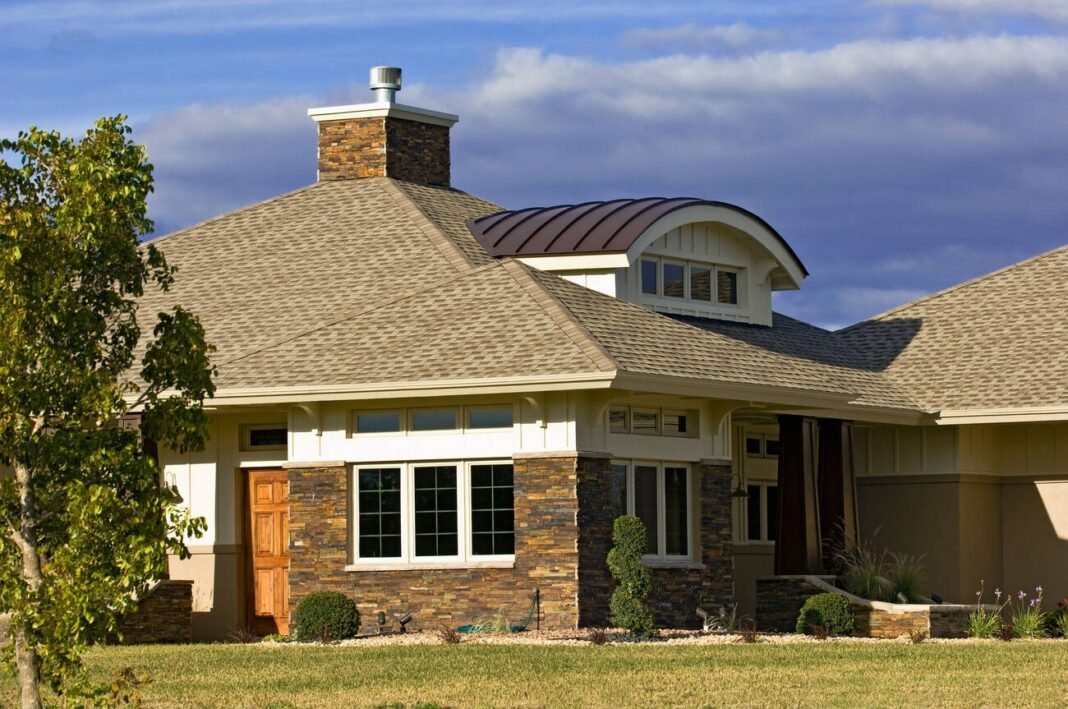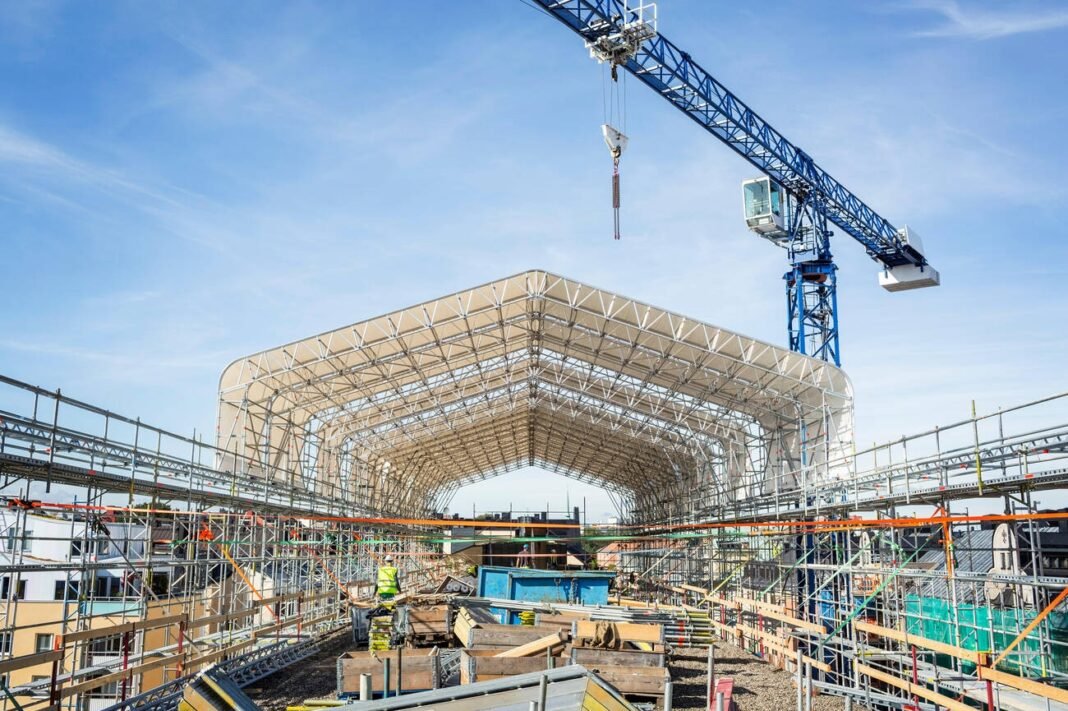Choosing the right Custom Home Building is essential for anyone looking to bring their dream home vision to life, considering factors like style, size, and features. This initial decision lays the groundwork for a project that encompasses not just home building but realizing a personalized vision.
This guide offers insights on navigating the financial landscape of custom home building and selecting a builder and architect who aligns with your expectations. It outlines the steps towards understanding the building process, ensuring a smoother journey from concept to completion.
Deciding on Your Custom Home Vision
Define Your Vision of Home
Creating a clear “Vision of Home” is the foundation of custom home building. This vision encompasses your desired lifestyle, including where and how you live, work, and relax. Articulate this vision by writing it down, which aids in communicating your aspirations to architects and builders, ensuring everyone involved understands your objectives.
Architectural Style and Home Layout
Decide on an architectural style that reflects your personal taste, whether it be modern, traditional, or something entirely unique. Consider the functionality of your home’s layout, including the number of bedrooms, bathrooms, and the size and arrangement of living spaces, which will cater to your daily activities and comfort.
Location and Proximity
The location of your custom home significantly impacts your lifestyle. Choose a site that offers convenient access to work, educational institutions, shopping centers, and recreational facilities. This ensures your new home not only meets your living standards but also enhances your quality of life.
Collaborate with Professionals
Engage with a custom home builder early in the process to refine your vision, ensuring the design meets local building regulations and practical living requirements. Builders and architects will help navigate these complexities, turning your vision into a feasible building plan.
Sustainable and Smart Home Features
Incorporate energy-efficient designs and smart home technologies to reduce environmental impact and enhance living convenience. Features like sustainable materials, energy-saving appliances, and automated systems contribute to a home that is both modern and responsible.
Long-term Planning
Think about future needs such as family expansion, accessibility, and potential resale value. Designing with the future in mind helps avoid costly renovations and ensures the home remains functional and appealing over time.
Personalization and Detailing
Customize your home with unique features that reflect your style and needs. From bespoke cabinetry and specialty finishes to innovative lighting and home automation, these details make your home truly personalized.
Professional Guidance
If the process becomes overwhelming, do not hesitate to seek professional advice. Design experts can offer guidance, simplify decisions, and ensure your home vision is realized effectively.
Research and Inspiration
Utilize resources like online design tools, style quizzes, and inspiration boards to define and refine your aesthetic preferences. Researching current architectural and interior design trends can also provide valuable insights into making informed decisions about your custom home.
Navigating the Financial Aspects of Custom Home Building
Navigating the financial aspects of custom home building involves a comprehensive understanding of budgeting, financing options, and strategic planning to ensure financial feasibility and success. Here are key points to consider:
Establish a Comprehensive Budget
- Initial Costs: Include land acquisition, construction, design fees, permits, and legal fees.
- Additional Expenses: Account for landscaping, interior finishes, and potential unforeseen costs.
- Future Planning: Consider long-term maintenance, property taxes, and insurance.
Understand Financing Options
- Lot Loans: For purchasing the land.
- Construction Loans: Options include construction-to-permanent loans which convert to a mortgage upon completion, standalone construction loans requiring full payment post-construction, and renovation loans for existing structures.
- Mortgage-Based Loans: Necessary for financing the completed home.
Loan Details and Processes
- Loan-to-Value Ratios: Typically, 75%-90% LTV, impacting down payment requirements.
- Interest Rates: Generally 1%-2% above prime for both land and construction loans.
- Loan Terms: Most loans offer terms around 1-year, extendable under certain conditions.
Strategic Financial Planning
- Energy Efficiency: Prioritize sustainable features to reduce long-term costs.
- Professional Guidance: Collaborate with experts early to align budget with design and regulatory requirements.
- Contingency Funds: Allocate an additional 10%-15% of the total budget for unexpected expenses.
Navigating these financial aspects effectively ensures that your custom home building project remains within budget and on schedule, ultimately leading to the successful realization of your dream home.
Choosing the Right Builder and Architect
Experience and Reputation
When selecting a custom home builder and architect, it’s essential to consider their experience and reputation. Look for professionals who have a proven track record in constructing high-quality custom homes and can provide examples of their previous work. This ensures they have the necessary expertise to handle the complexities of custom home building.
Team Collaboration
Choose a builder and architect who are accustomed to working as a team. Their ability to collaborate effectively can greatly influence the efficiency and quality of the building process. A cohesive team will leverage their collective knowledge and experience to optimize the design and construction of your home.
Early Engagement
Engage with a custom home builder early in the design process. A reputable builder can offer valuable insights during the architectural design stage, helping to keep the project on track and within budget. They can provide design ideas, suggest cost-saving alternatives, and ensure the project meets all safety and quality standards.
Comprehensive Evaluation
Before finalizing your choice, conduct thorough evaluations of potential builders and architects. This includes interviewing them, reviewing their portfolios, and visiting ongoing project sites. Assess their communication skills, organizational abilities, and the overall team dynamics to ensure they align with your expectations.
Builder’s Additional Contributions
Consider a builder who offers comprehensive services beyond just construction. Many experienced builders provide design input, assist with obtaining permits, and even integrate smart home technology. Their ability to offer a wide range of services can simplify the construction process and enhance the overall functionality of your home.
Check References and Reviews
Finally, always check the references and reviews of the builders and architects. Speak with both past and current clients to understand their strengths and weaknesses. This feedback can provide critical insights into their work ethic, reliability, and the quality of their construction.
Understanding the Building Process
Understanding the building process of a custom home is crucial for ensuring everything runs smoothly from start to finish. Here’s a breakdown of the essential steps involved:
Step-by-Step Guide to the Building Process
- Site Preparation
- Begin excavation of the foundation, ensuring proper site clearance and leveling.
- Foundation and Structural Framework
- Pour concrete footers and foundation walls, followed by waterproofing and backfilling. Install steel I-beams and begin framing for floors and walls.
- Building Envelope and Exterior
- Set roof trusses and install roof sheathing. Proceed with the exterior facade, including brick, siding, or stone.
- Interior Systems and Insulation
- Rough-in plumbing, HVAC, and electrical systems. Install insulation and proceed with drywall installation.
- Finishing Touches
- Lay flooring, install cabinetry, and paint walls. Add interior trim, window sills, and door fixtures.
- Final Stages
- Install countertops, appliances, and bathroom fixtures. Perform final inspections and cleaning.
Key Considerations in the Building Process
- Permits and Inspections: Ensure all necessary permits are acquired and inspections are scheduled at various stages to comply with local building codes.
- Material Management: Order, check, and accept building materials, ensuring they meet the project’s specifications and quality standards.
- Subcontractor Coordination: Manage subcontractors effectively to ensure timely and quality execution of electrical, plumbing, and HVAC systems.
- Homeowner Education: Educate the homeowner on the operation and maintenance of the house and review the warranty and service terms.
Challenges and Solutions
- Timeline Delays: Unforeseen challenges such as weather conditions or material delays can affect the timeline. Having a contingency plan and flexible scheduling can mitigate these impacts.
- Budget Management: Track costs diligently and manage changes through proper contracts and approvals to avoid budget overruns.
- Quality Control: Regular inspections and working with reputable subcontractors help maintain high standards throughout the construction process.
By understanding these steps and considerations, homeowners can feel more confident and involved in the building process, ensuring their custom home meets their vision and standards.
Conclusion
Throughout this guide, we’ve navigated the intricate journey of choosing a custom home builder, a decision pivotal in bringing your unique vision of a dream home from concept to reality. We’ve explored the importance of defining your home’s vision, the considerations for the architectural style and layout, and the significance of location, while also emphasizing the crucial role of professional collaboration in achieving a design that aligns with your lifestyle and future needs. Moreover, the financial aspects of custom home building, including budgeting, financing, and strategic planning, have been dissected to ensure your project not only meets but exceeds your expectations without compromising financial viability.
By highlighting the process of selecting the right builder and architect, noting their experience, reputation, and ability to collaborate effectively, this guide aims to equip you with the knowledge to make informed decisions throughout your custom home building journey. Understanding the step-by-step building process, from site preparation to the final touches, underscores the importance of active involvement, effective communication, and meticulous planning.
Remember, building a custom home is not just about erecting a structure; it’s about crafting a personalized space that reflects your style, satisfies your needs, and stands as a testament to your aspirations. Engaging with the right professionals and focusing on the end goal will make the journey as rewarding as the destination—the realization of your dream home.
FAQs
What are the necessary steps to construct my dream home from the beginning? To construct your dream home, follow these nine essential steps:
- Determine your budget to understand your financial limits.
- Find a suitable location that meets your preferences and needs.
- Hire an architect to design your home according to your vision.
- Secure financing to fund the construction process.
- Obtain all necessary permits from local authorities to proceed legally.
- Build the foundation, which is the base of your home.
- Construct the structure, which includes walls, roof, and floors.
- Finish the interior and exterior to your taste and specifications.
What is the process for building a custom-designed home? The process of building a custom-designed home involves 10 key steps:
- Choose and purchase your homesite where your home will be located.
- Select a reputable builder who will bring your vision to life.
- Design your floor plan to reflect your lifestyle and preferences.
- Sign a contract with your builder to formalize the agreement.
- Secure financing to ensure you have the funds for construction.
- Pick your fixtures and finishes to customize the home’s details.
- Submit your design to an Architectural Review Committee if required.
- Begin construction to start turning your dream home into reality.


